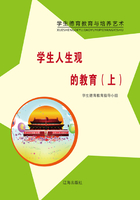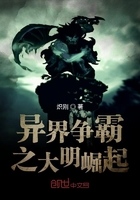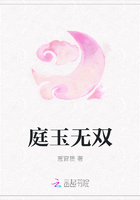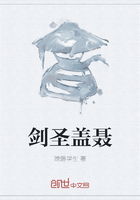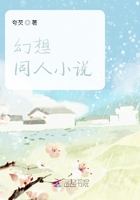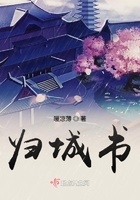A septet of Rip Van Winkles, the men who came to be known as the Seven Sleepers, had the misfortune of being devout Christians in third-century Turkey in the midst of Emperor Decian’s anti-Christian persecutions. The seven fled their homes with the emperor’s henchmen in hot pursuit. They ducked into a cave and launched into prayer, preparing for what seemed their imminent martyrdom. They shared what they believed would be their last meal. Then they all lay down to sleep, believing that Decian’s men would discover them at any moment. But as miracles will have it, they slept undisturbed for 208 years. By the time they awoke and emerged from the cave, Decian had not only stopped looking for them, he was long since deceased. The current emperor, a Christian, hailed the Seven Sleepers as saints and kissed them, at which point they all lay down and died.
Sleepyhead Day marks the Seven Sleepers’ collective feast day in Naantali, southwestern Finland. Soon after dawn, howling revelers fill the streets, headed for the home of the current year’s “sleepyhead”: some unsuspecting local celebrity. A waking-up party is let into the house; the Sleepyhead is roused rudely, hauled out of bed, marched down to the town’s harbor, and tossed into the drink.
Vocabulary 词汇
septet ["sep"tet] n. 七位字节,七重奏
misfortune [mis"f?:t??n] n. 不幸,灾祸,灾难
Emperor ["emp?r?] n. 皇帝,君主
martyrdom ["mɑ:t?d?m] n. 殉难,牺牲,受难
emerged(emerge [i"m?:d?] 的过去分词) vt. 出现,浮现,暴露
Practice
Can you associate this festive with other story about someone sleeping for a long time?
译文
在3世纪的土耳其,有7位里普·范温克尔式的人物,称为7位贪睡人,很不幸,作为虔诚的基督徒。他们遭到了当时反基督教的皇帝迪赛安的迫害。皇帝的侍从对他们穷追不舍,他们7人只得逃离家园。他们躲进一个山洞之后便开始祷告,为可能来临的殉难做准备。在分享了自认为最后的晚餐之后,他们就躺下睡觉了,相信迪赛安的手下随时都会找到他们。然而真是奇迹,他们竟安稳地沉睡了208年。等到他们一觉醒来走出山洞时,迪赛安不仅早已不再追杀他们,而且早已死去了。而此时的皇帝本人就是基督徒。他赞扬他们为圣徒,并亲吻了他们。然而他们却随即倒下,死了。
在芬兰西南部的楠塔利镇,贪睡人的节日是纪念7位贪睡人的集体节日。天一亮,满街就都是高声喊叫的狂欢者。他们涌进该年的“贪睡人”——当地对此事毫无觉察的某个名人的家中。这一大帮唤醒者被带进屋子,粗鲁地将贪睡人弄醒,将他从床上拖起来带到该镇的港口并把他扔到海里去。
练习
你能想到别的什么沉睡很久的故事吗?
09 Wedding Customs and Traditions 婚礼的习俗与传统
The idea of having bridesmaids, pages, a best man and ushers originated with the belief that evil spirits, envious of the couple’s happiness, would be out to harm them, but would be confused by so many similarly dressed people. The custom of the best man probably goes back to the days when the groom took a friend with him when he went to kidnap the bride from her home. Bells were originally rung at weddings to frighten away the evil spirits, and noisy celebrations were held beforehand to try and drive them from the community. These were the ancestors of our stag and hen parties.
The Ancient Egyptians were probably the first to use wedding rings: in hieroglyphics, the circle was the symbol of eternity. The ring can also symbolize the bonds of a captive.
The Hindu ceremony takes place under a canopy of brocade or some other richly decorated material, festooned with flowers. The bride, wearing a red silk sari, is the first to arrive, but she hides out of sight until the bridegroom, robed in white, has been brought in by his friends and relations. As he enters, lights are waved over his head and grains of rice are thrown, a ceremonial act symbolizing riches and fertility.
In the Buddhist ceremony the bride and groom sip three times from each of three bowls of increasing size to symbolize how their lives will grow together.
In past times it was customary to shower the bride and groom with petals as they left the church, and for them to walk along a path strewn with flowers. This charming idea gave way in the era of mass production to paper confetti. In some countries, rice is thrown, to symbolize fertility and plenty. Beware, it could hurt if thrown with great vigour.
White wedding dresses have been in the forefront of bridal fashion since Queen Victoria broke with the royal tradition of a silver dress and opted for white for her wedding to Prince Albert in 1840.
The going-away car is often decorated by high-spirited friends with messages in lipstick and shaving foam, and tied about with balloons, tin cans, and old boots. The “old boot” tradition is an ancient one and stems from the time when the father, on giving away his daughter to the groom, presented him also with one of her slippers. This gave the new husband, symbolically speaking, the upper hand, for he was supposed to thrash her with it should she displease him. The slipper was put at the bed head on his side of the bed to remind his wife w ho was boss. However, if she became the dominant partner, neighbors transferred the power of the slipper to her, and christened her “the old boot.”
In the Jewish wedding ceremony the couple are married under a chuppah, a canopy of s ilk or velvet held up by four posts. This is a relic o f the time when the children of Israel lived in tents. It symbolizes the bridal chamber. To some it signifies the home the couple will make together; its fragility reminds the couple of their own weakness and the need to nurture their union in order to ensure its survival. During the ceremony the bride and groom drink wine from the same glass, symbolizing that they will share all things. The bridegroom then dashes the glass to the floor and grinds it under his foot. Some say that this is a reminder of the destruction of the Temple of Jerusalem, others that it frightens off the evil spirits, friends call out muzeltov (good luck) at this point.
Vocabulary 词汇
bridesmaids ["braidzmeid] n. 女傧相
groom [ɡru:m] vt. 推荐,喂马,整饰;
n. 马夫,新郎,男仆
kidnap ["kidn?p] vt. 绑架,诱拐,拐骗
ancestors ["?nsest?s] (ancestor 复数形式) n. 祖先,上代,先祖
hieroglyphic ["hai?r?"glifik] n. 象形文字;难以辨认或理解的文字
ceremony ["serim?uni] n. 典礼,礼节,客套,虚礼
Buddhist ["budist] n. 佛教徒;
adj. 佛教的
church [t??:t?] n. 教堂,礼拜;
adj. 教会的,礼拜的;
vt. 接受宗教仪式
lipstick ["lipstik] n. 口红,唇膏;
vt. 涂口红;
vi. 涂口红
Jewish ["d?u:i?] adj. 犹太人的,犹太族的
fragility [fr?"d?iliti] n. 脆弱,易碎性,虚弱
Practice
Do you know some other wedding customs?
译文
婚礼中配伴娘、男童、男傧相和迎宾员的观念源于这样一种信仰,即嫉妒新人幸福的邪恶幽灵会冒出来伤害他们,但如果婚礼上有许多着装类似的人,就能迷惑幽灵。配男傧相的习俗大概要追溯到那种年代,那时新郎往往要带上一个朋友去新娘家把她绑架出来。铃在婚礼上叮当作响原是为了吓走邪恶幽灵,而在婚礼之前举办热闹的庆祝会也是为了把那些邪恶幽灵从新人和他们的亲朋好友中赶走。这就是“雄鹿会”和“母鸡会”的由来。
最早佩戴结婚戒指的大概是古埃及人:在象形文字中,圆圈是永恒的象征。金属环也表示被俘人身上的镣铐。





